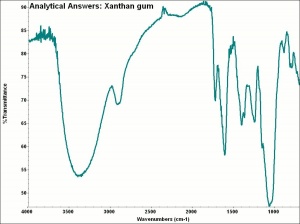Difference between revisions of "Xanthan"
Jump to navigation
Jump to search
(username removed) |
(username removed) |
||
| Line 15: | Line 15: | ||
== Authority == | == Authority == | ||
| − | * | + | * Richard S. Lewis, ''Hawley's Condensed Chemical Dictionary'', Van Nostrand Reinhold, New York, 10th ed., 1993 |
| − | * | + | * I.W. Cottrell, J.K. Baird, gums chapter |
* Wikipedia, the free encyclopedia, at http://www.wikipedia.com Comment: http://en.wikipedia.org/wiki/Xanthan (accessed Mar. 10, 2006) | * Wikipedia, the free encyclopedia, at http://www.wikipedia.com Comment: http://en.wikipedia.org/wiki/Xanthan (accessed Mar. 10, 2006) | ||
Revision as of 06:23, 24 July 2013
Description
A polysaccharide material produced by the fermentation of sugar by the bacterium Xathomonas campestris, originally isolated from the rutabaga plant. Xanthan is primarily composed of mannose, glucose, and glucuronic acid units. It is a cream-colored powder that is dissolves in water to produce a thick viscous solution at very low concentrations. Xanthan remains stable over a wide temperature range and forms a strong film on drying. Xanthan is used as a binder, an extender and stabilizer in foods and cosmetics.
Synonyms and Related Terms
xanthan gum; xanthaangom (Ned.); Ketrol F; Kelzan
Other Properties
Soluble in hot or cold water, acids and bases.
Authority
- Richard S. Lewis, Hawley's Condensed Chemical Dictionary, Van Nostrand Reinhold, New York, 10th ed., 1993
- I.W. Cottrell, J.K. Baird, gums chapter
- Wikipedia, the free encyclopedia, at http://www.wikipedia.com Comment: http://en.wikipedia.org/wiki/Xanthan (accessed Mar. 10, 2006)
